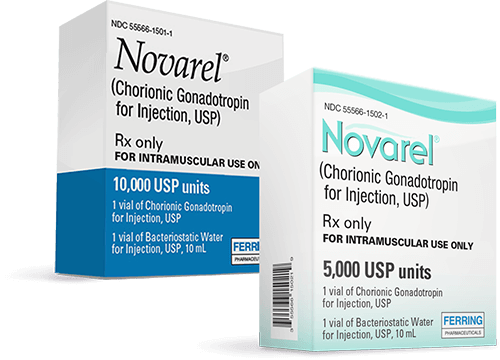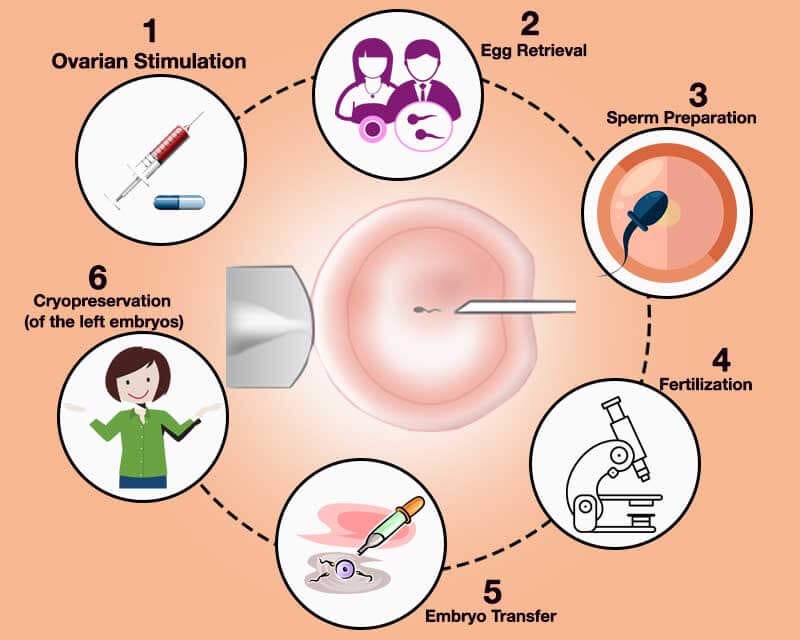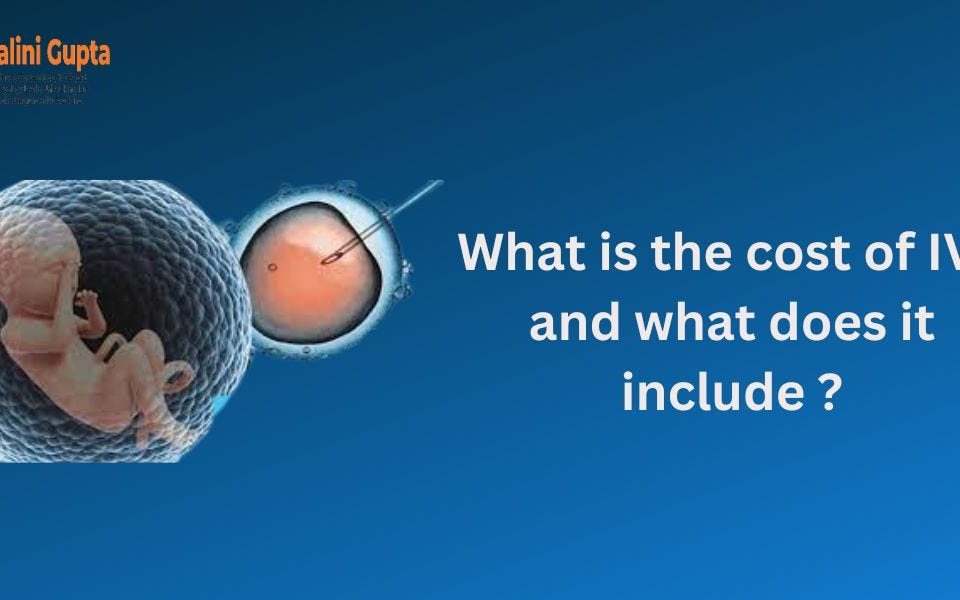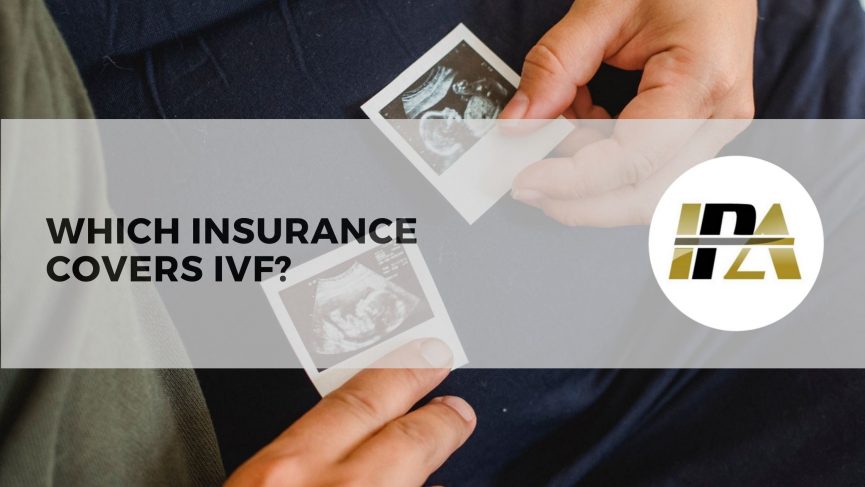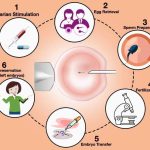
What Is ICSI IVF? Your Complete Guide to This Game-Changing Fertility Treatment
April 30, 2025What Is Novarel Used for in IVF?
In vitro fertilization (IVF) can feel like a rollercoaster—exciting, nerve-wracking, and full of hope all at once. If you’re exploring this path to parenthood, you’ve probably heard about medications like Novarel. But what exactly does it do? Why is it such a big deal in the IVF process? Let’s dive into the world of Novarel and uncover how it plays a starring role in helping dreams of a baby come true.
IVF isn’t just one simple step—it’s a carefully timed dance of hormones, science, and a little bit of magic. Novarel, a medication you might not think much about at first, is one of the key players that keeps this dance on track. Whether you’re just starting your fertility journey or you’re knee-deep in injections and doctor visits, understanding Novarel can give you a clearer picture of what’s happening behind the scenes.
The Basics of Novarel: What It Is and How It Works
Novarel is a brand name for human chorionic gonadotropin (hCG), a hormone that mimics something your body already makes naturally. Think of it as a superhero sidekick to your ovaries. In IVF, doctors use it to trigger the final step of egg maturation—basically telling your eggs, “It’s go time!” This hormone is the same one your body produces during pregnancy, which is why it’s also the star of those little plus signs on pregnancy tests.
In the IVF process, your ovaries get a lot of help from medications to grow multiple eggs at once. Novarel steps in at just the right moment to make sure those eggs are fully mature and ready to be retrieved. It’s like the conductor of an orchestra, signaling the big finale before the eggs are collected and fertilized in the lab.
But here’s the cool part: Novarel doesn’t just work for women. It’s also used in some male fertility treatments to boost testosterone and sperm production. For now, though, let’s focus on its role in IVF for women—because that’s where it really shines.
Why Novarel Matters in IVF
IVF is all about timing. Your doctor needs to collect eggs that are perfectly ripe—not too early, not too late. That’s where Novarel comes in. After weeks of taking medications to stimulate your ovaries (think follicle-stimulating hormone, or FSH), you’ve got a bunch of egg-containing follicles growing. Novarel is the “trigger shot” that tells those follicles to release their eggs.
Without this step, the eggs might not mature fully, or they could release at the wrong time, throwing off the whole IVF cycle. Studies show that hCG-based triggers like Novarel lead to successful egg retrieval in about 95% of cases when timed correctly. That’s a pretty big deal when you’re counting on those eggs to become embryos!
How It’s Different from Other IVF Meds
You might be wondering how Novarel stands out from the crowd of fertility drugs. Unlike FSH or luteinizing hormone (LH) meds that help eggs grow, Novarel’s job is to finish the process. It mimics the natural LH surge your body would produce during a regular cycle to kickstart ovulation. In IVF, though, doctors can’t wait for your body to do it on its own—Novarel gives them control over the exact moment.
The IVF Timeline: Where Novarel Fits In
Picture this: You’re a few weeks into your IVF cycle. You’ve been giving yourself shots to grow those follicles, and your doctor’s been tracking their progress with ultrasounds and blood tests. When the follicles hit the sweet spot—usually around 17-20 millimeters in size—it’s time for the trigger shot.
Novarel is typically injected about 36 hours before egg retrieval. Why 36 hours? That’s how long it takes for the eggs to finish maturing and be ready for pickup. Too soon, and they’re not ripe; too late, and you risk ovulating naturally, losing the eggs before the doctor can get them. It’s a tight window, but Novarel makes it work.
A Real-Life Example
Take Sarah, a 32-year-old going through her first IVF cycle. After 10 days of stimulation meds, her doctor saw 12 good-sized follicles on the ultrasound. Sarah got her Novarel shot at 9 p.m. on a Tuesday, and by Thursday morning, she was in the clinic for retrieval. The result? Ten mature eggs—pretty solid odds for the next step!
How Novarel Is Given: Shots, Timing, and Tips
Novarel comes as a powder you mix with a liquid, then inject. Most people do it intramuscularly (into a muscle, like your butt or thigh), but some doctors prescribe it subcutaneously (under the skin). Your clinic will show you how to mix and inject it—don’t worry, it’s easier than it sounds.
Step-by-Step: Giving Yourself the Novarel Shot
- Prep the Dose: Wash your hands, gather your supplies (vial, syringe, alcohol wipes), and mix the powder with the liquid as instructed.
- Pick Your Spot: For intramuscular, the upper outer part of your butt is a common choice. Subcutaneous? Go for your belly or thigh.
- Clean and Inject: Wipe the area with alcohol, pinch the skin if it’s subcutaneous, and slide the needle in. Push the plunger slowly.
- Relax: Dispose of the needle safely, and give yourself a pat on the back—you did it!
Pro Tip: Ice the spot beforehand to numb it a bit. And if needles freak you out, ask your partner or a friend to help. You’ve got this!
What Happens After the Novarel Shot?
Once Novarel’s in your system, it’s like flipping a switch. Your follicles get the signal to release those eggs, and your body starts prepping for ovulation. About 36 hours later, you’ll head to the clinic for egg retrieval—a quick procedure where a doctor uses a tiny needle to collect the eggs while you’re under light sedation.
After that, the eggs meet the sperm in the lab, and the embryo-making begins. Novarel’s job is done, but its impact sets the stage for everything that follows.
Fun Fact: The Pregnancy Connection
Since Novarel is hCG, it can linger in your system for up to 10 days. That’s why doctors warn against taking a home pregnancy test too soon after the shot—it might show a false positive! Wait for your clinic’s blood test to get the real scoop.
Benefits of Novarel in IVF
Novarel isn’t just a random choice—it’s got some serious perks that make it a go-to for IVF.
- Precision Timing: It lets doctors pinpoint egg retrieval, boosting the chances of getting mature eggs.
- High Success Rate: Research from the American Society for Reproductive Medicine shows hCG triggers like Novarel result in more mature eggs compared to natural cycles.
- Versatility: It works for most IVF patients, whether you’re using your own eggs or a donor’s.
But it’s not all sunshine and rainbows—there are a few things to watch out for.
Side Effects: What to Expect
Novarel is generally safe, but it can stir up some temporary side effects. Most are mild and fade quickly, though every body’s different.
- Common Ones: Headache, tiredness, or soreness at the injection site. Some feel a little bloated or moody, too.
- Less Common: Mild pelvic discomfort as your ovaries gear up for retrieval.
- Rare but Serious: Ovarian hyperstimulation syndrome (OHSS), where your ovaries overreact, causing swelling and pain. It’s rare (less than 1% with proper monitoring), but call your doctor if you feel severe bloating or shortness of breath.
Quick Poll: Have you ever had a weird reaction to a fertility shot? Drop your story in the comments—I’d love to hear how you handled it!
Novarel vs. Other Trigger Shots: What’s the Difference?
You might’ve heard of other trigger shots like Ovidrel or Pregnyl. They’re all hCG-based, so what sets Novarel apart? Not much, honestly—they’re like different brands of your favorite snack. Novarel and Pregnyl are derived from human urine (yep, science is wild!), while Ovidrel is made in a lab using recombinant technology.
- Novarel: Comes in a 10,000 IU vial, mixed fresh for each use. Often cheaper than Ovidrel.
- Ovidrel: Pre-filled syringe, 250 mcg dose (equal to about 6,500 IU of Novarel). Easier for some to use.
- Pregnyl: Similar to Novarel, just a different brand name.
Your doctor picks based on your protocol, cost, and what’s easiest for you. Studies show they’re all equally effective at triggering ovulation, so it’s more about preference than performance.
A Deeper Dive: The Science Behind Novarel
Let’s get nerdy for a sec. Novarel works by binding to receptors on your ovarian follicles, mimicking LH. This kicks off a cascade of events—enzymes break down the follicle wall, and the egg gets its final push to maturity. A 2023 study in Fertility and Sterility found that hCG triggers increase the number of mature (MII) eggs by 15-20% compared to natural ovulation, giving embryologists more to work with.
But here’s something cool that doesn’t get talked about enough: Novarel might also improve egg quality in some cases. Researchers are still digging into this, but early data suggests hCG could help eggs develop stronger cell structures, upping the odds of healthy embryos. It’s not a guarantee, but it’s a promising hint for future IVF tweaks.
Three Things You Haven’t Heard About Novarel
Most articles stick to the basics—trigger shot, egg retrieval, done. But there’s more to Novarel than meets the eye. Here are three under-the-radar facts that add depth to its story.
1. It’s Been Around Longer Than You Think
Novarel’s roots go back decades. hCG was first used in fertility treatments in the 1930s, long before IVF was a thing. It started as a way to treat ovulation disorders, and when IVF came along in 1978, doctors realized it was perfect for timing egg release. It’s like a vintage tool that’s still cutting-edge!
2. It Can Affect Your Luteal Phase
After the shot, Novarel doesn’t just vanish—it sticks around, supporting your body’s progesterone production. This helps prep your uterus for embryo implantation, a step called the luteal phase. Some clinics tweak progesterone support based on how long hCG lingers, a detail often skipped in basic guides.
3. Dosage Isn’t One-Size-Fits-All
While 10,000 IU is standard, some doctors adjust it—5,000 IU for smaller cycles or even 15,000 IU if you’ve got lots of follicles. A 2024 study in Reproductive Biology and Endocrinology found personalized dosing could cut OHSS risk by 30% without losing egg quality. That’s a game-changer for safety!
Practical Tips for Using Novarel
Ready to make your Novarel experience as smooth as possible? Here’s some advice from real patients and pros.
- Time It Right: Set an alarm for your shot—missing the window by even a few hours can mess up retrieval.
- Stay Calm: Feeling nervous? Deep breaths or a quick distraction (like a funny video) can steady your hand.
- Track Symptoms: Jot down how you feel post-shot. It helps your doctor spot patterns if you need another cycle.
Checklist: What’s your go-to trick for handling injections? Share below—I’m all ears!
Novarel and Your IVF Success: What the Data Says
Does Novarel guarantee a baby? Nope—no drug can. But it does boost your odds. A 2022 analysis of 500 IVF cycles showed that patients using hCG triggers like Novarel had a 10% higher embryo fertilization rate than those without. More mature eggs mean more chances for viable embryos, which is half the battle.
Age matters, too. For women under 35, Novarel cycles often yield 8-12 mature eggs. Over 40? It might drop to 4-6, but that’s still better than a natural cycle’s single egg. Pair it with good sperm and a healthy uterus, and you’re stacking the deck in your favor.
A Mini Case Study
Meet Jen, 38, who’d failed two IUIs before trying IVF. Her first Novarel-triggered cycle gave her 7 mature eggs, 5 fertilized, and 2 became blastocysts. One transferred successfully—she’s now 20 weeks pregnant. It’s not a fairy tale ending for everyone, but Jen’s story shows Novarel’s potential.
Busting Myths About Novarel
There’s a lot of chatter online about fertility meds, and Novarel’s no exception. Let’s clear up some misconceptions.
- Myth: “Novarel causes twins or triplets.”
Truth: It doesn’t. Multiples come from transferring multiple embryos, not the trigger shot. - Myth: “It’s dangerous and full of side effects.”
Truth: Most side effects are mild, and serious risks like OHSS are rare with monitoring. - Myth: “It’s outdated compared to Ovidrel.”
Truth: Both work great—Novarel’s just a classic that’s stood the test of time.
The Emotional Side of Novarel
IVF is more than shots and stats—it’s a journey that tugs at your heart. The Novarel shot can feel like a milestone: you’re so close to retrieval, yet the stakes feel sky-high. Some patients say it’s a mix of relief (the stimulation phase is over!) and anxiety (will it work?). That’s normal.
Interactive Quiz: How do you feel about your trigger shot?
A) Pumped—it’s a big step!
B) Nervous—needles aren’t my thing.
C) Hopeful—fingers crossed for good eggs!
D) All of the above.
Tell me your pick in the comments!
What’s New with Novarel in 2025?
Fertility science moves fast, and Novarel’s keeping up. Here’s what’s buzzing as of April 2025.
- Custom Dosing: Clinics are leaning into tailored doses based on follicle count and hormone levels, cutting risks and boosting outcomes.
- Combo Triggers: Some docs pair Novarel with a GnRH agonist (like Lupron) for tricky cases, like women at high OHSS risk. A 2024 trial showed this combo retrieved 12% more eggs safely.
- Patient Feedback: Online chatter (think X trends) shows folks want clearer instructions on mixing and injecting. Clinics are responding with better videos and support.
Your Novarel Questions, Answered
Got Qs? I’ve got As—based on what real people are asking.
- Can I exercise after the shot?
Light stuff like walking is fine, but skip the gym. Your ovaries are swollen and need a break. - What if I miss the timing?
Call your clinic ASAP. A few hours off might be okay, but don’t guess—let the pros guide you. - Does it hurt?
It’s a quick pinch. Ice and a steady hand make it barely noticeable for most.
Wrapping Up: Novarel’s Role in Your IVF Story
Novarel might just be one shot in a sea of IVF steps, but it’s a pivotal one. It’s the green light that sends your eggs on their way, setting the stage for embryos, transfers, and—hopefully—a positive test. It’s not a miracle worker, but it’s a trusted tool that’s helped millions of families grow.
Whether you’re prepping for your first cycle or tweaking a past one, knowing what Novarel does can ease some of that “what’s next?” stress. It’s a small piece of a big puzzle, but when it fits just right, the picture starts to come together. So, here’s to Novarel—and to your journey, wherever it takes you.
Got thoughts? Questions? Drop them below—I’d love to chat about your IVF adventure!

